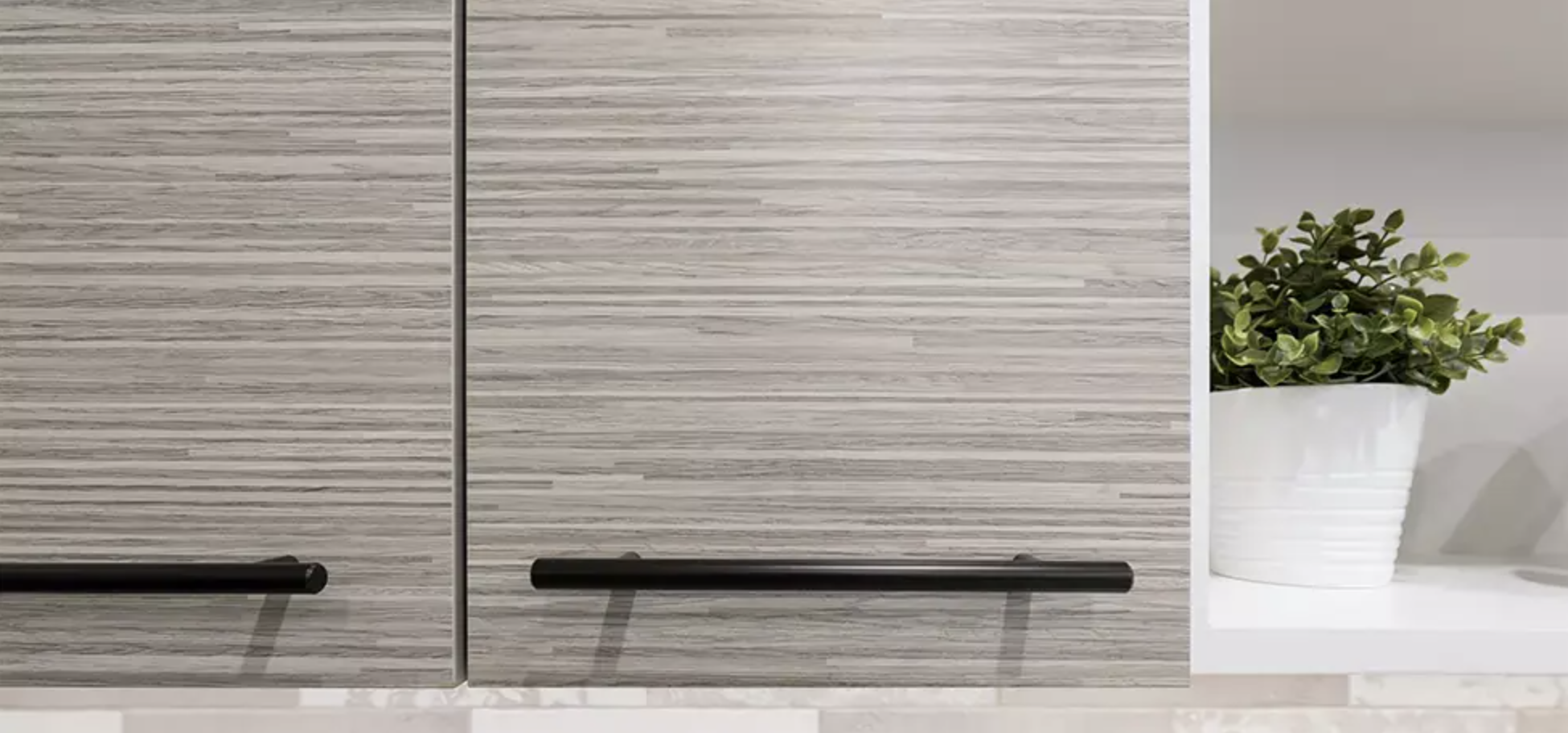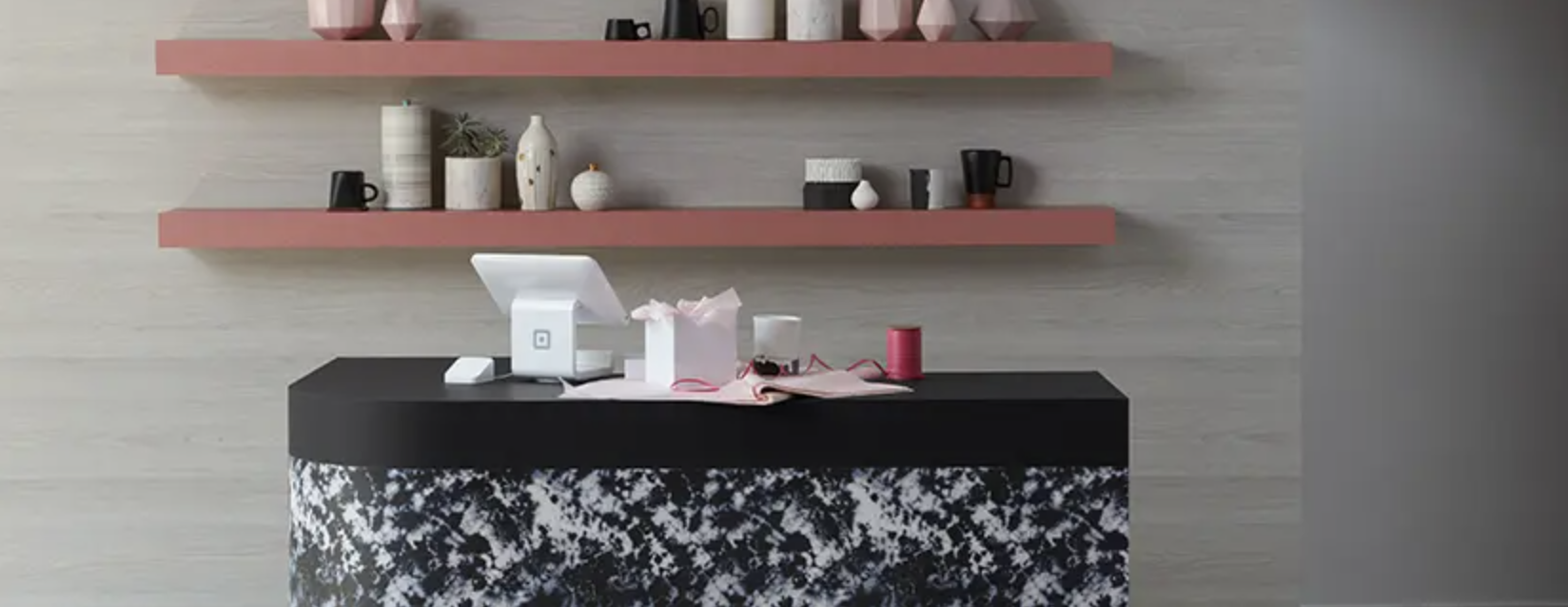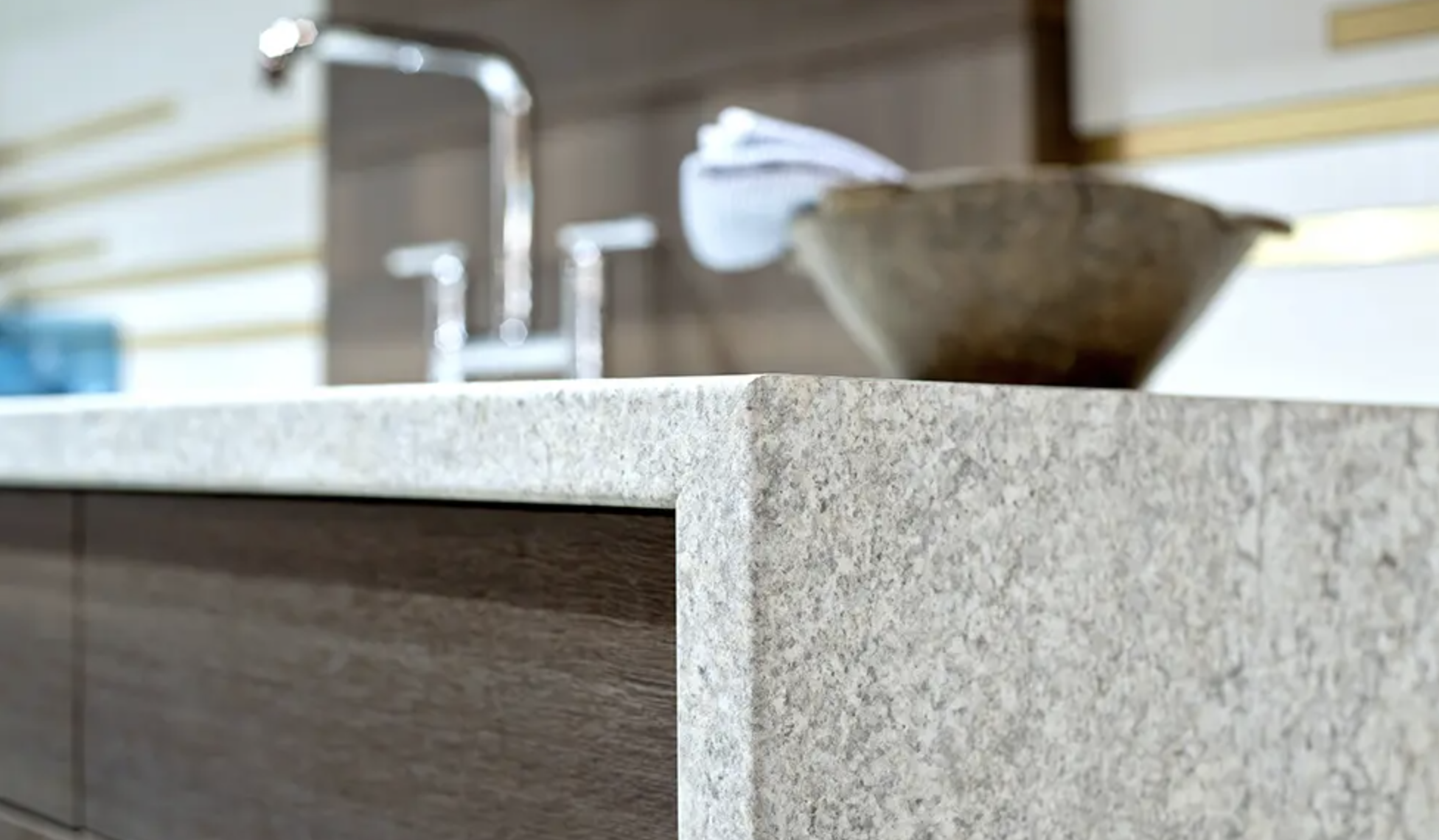How to Spec Laminate for Commercial Construction Projects
Find centralized info on how to specify laminate, HPL, and TFL for commercial construction projects. Info on specifying laminate casework, countertops, wall panels, partitions and more.
Images courtesy of Wilsonart
Laminate is well known in the design world for being one of the most budget-friendly countertop products as well as highly durable and easy to maintain. Originally developed in 1909 as an insulation product for electrical devices, it was later used as an interior finish starting in the 1920s, when concerns of cleanliness and efficiency were paramount as Americans were increasingly invested in preventing illness. Early popular uses of the product were in bars and diners, where spills were no match for the impervious surface of plastic laminate. Eventually in the 1960s, laminate replaced enamel as the popular surface material for schools and hospitals, as it was more durable and quieter. You can nerd out more on the history of plastic laminate here and the Historic Wilson House showcasing innovative uses of laminate in the 1950s here!
Laminate products can be used in casework, countertops, wall panels, lockers, toilet partitions, athletic facility walls, retail areas & cash wraps, hospital hallways, walls & tables in schools, and other areas of high-use. With hundreds of designs to choose from ranging from woods, stones, geometric patterns, textural effects, solids, and even metal laminates, there is something that will work for every project! Laminates are commonly used in healthcare, education, hospitality, office, retail, and residential projects.
Image courtesy of Formica
Laminate, or HPL (high-pressure laminate), is a resin-coated decorative paper backed with kraft paper, which adds thickness and durability, and a phenolic resin layer, typically between 1/32” and 1/16” thick. The thicker the product, the more durable it will be. Textured or embossed patterns can be more pronounced with thicker construction. HPL has high impact-resistance, wear-resistance, stain-resistance, scratch-resistance, and is postformable with a variety of edge profiles.
HPL countertops are very easy to clean and maintain using mild detergents, however avoid using any acidic or abrasive cleaners, as this will erode the wear-layer. Laminates are not as heat-resistant as many stone countertops, so it is always recommended to use trivets for hot pans. For additional scratching, you can specify adding a high-wear layer to bring up the abrasion-resistance, but the standard works well against scratching. 7-Eleven stores use HPL for their countertops that see countless transactions every day! HPL has a non-porous surface and will hold up against moisture, unless it is damaged or compromised (edges not properly sealed for example) in which case the kraft paper layer may warp. Laminate is not recommended for outdoor use, as it is not UV-treated and drastic temperature changes can damage the laminate. It is also not recommended to apply HPL directly to gypsum wallboard, as moisture and temperature can cause delamination. Phenolic core products do not delaminate and work great as wall panels.
There are several edge profile options and finish options for laminate from matte to textured to gloss, including Traceless from Wilsonart. Traceless is an ultra-matte finish that is fingerprint-resistant and soft to the touch. High gloss textured laminates are sleek and modern, great for low traffic and are often used in showrooms, however they require more frequent cleaning because smudges and fingerprints are more obvious. Check out Wilsonart’s other finish options!
Melamine, or TFL (thermally-fused laminate) is the thinnest laminate, and therefore the least expensive - it is essentially resin-saturated paper (no kraft paper layer) bonded with heat and pressure to a piece of MDF or particleboard. This product is easiest to damage, having low scratch-resistance and impact-resistance, so it is not recommended for use in casework countertop applications. It is best for light-use locations such as shelving, vertical surfaces, and is commonly used on the interior of casework to line cabinets and drawers. One way to save cost on your project is to specify the same pattern in TFL and HPL, using TFL for vertical locations, and HPL for horizontal ones.
Image courtesy of West Coast Laminating
Phenolics are the most water-resistant laminates and great for vandal-prone and high humidity environments. They are incredibly durable, constructed by pressing hundreds of layers of kraft paper to create a super-compact solid product. You’ve probably seen these panels in schools, tabletops with a black core exposed. In the case that this extremely hardy material is damaged, it can be difficult to repair (not as easily as a solid surface), but dents or scratches can be filled with a color matched material. Wilsonart’s phenolic products include Compact, Solicor Compact, Solicor, and Thinscape.
Image courtesy of Metpar
Compact is great for high-traffic areas, including lockers, elevator cabs, wall panels, furniture, toilet partitions, and more. This product has the highest impact, moisture, scratch and abrasion resistance of the laminate products. It ranges from 1/10” to 1” thick!
Solicor Compact is similarly constructed, but has a solid color homogeneously throughout the body of the panel, so seamless edges can be created and even engravings. If you specify the pattern on both sides of the Compact panel and use for say, wall panels, after years of damage the panels can be flipped for a fresh new side.
Solicor also has a through-color body, so any exposed edges will blend into the pattern. If the edge chips, it will not be as noticeable as a traditional HPL, which will expose the kraft paper at the edge. Solicor is ideal for desks, countertops, display cases, casework (especially cubbies with lots of exposed edges), and backsplashes. The downside in comparison to HPL is there are fewer designs to choose from, and it is a more expensive product. Solicor is best used only when necessary for an ultra-clean look.
Thinscape is an excellent modern countertop option, boasting only ½” thick with high impact-, stain-, moisture-, scratch- and abrasion-resistance. No sealing is required, making it a low-maintenance option. It is easily fabricated using traditional woodworking tools, or a CNC router, and works well with undermount sinks.
Image courtesy of Fast Partitions
If you are still trying to decide which product would work best for your application, try out Wilsonart’s Compare tool to clearly understand the differences and strengths between products.
Author
Maddy Gorman, NCIDQ | Interior Designer
Disclaimer
While we hope you find an incredible amount of value in this article, we surely haven’t been able to cover the broad swath of applications and particular circumstances that will come up on every project. We encourage and suggest that you should connect directly with your manufacturer’s rep regarding the specific specification needs of your project.
You can find your local manufacturer’s rep in the world’s largest commercial construction rep directory here. Grab their contact information, or send a message right on Source. Happy specifying!







